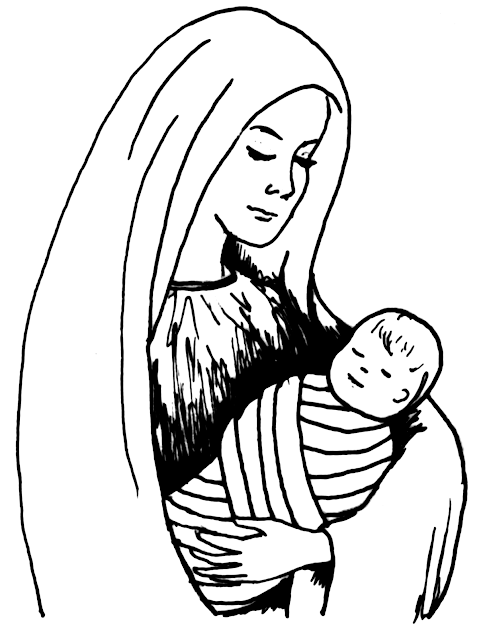Table of Contents
Swaddling Your Baby: Weighing the Pros and Cons
Swaddling is a traditional practice of wrapping babies in a blanket or cloth to create a snug and secure environment, replicating the sensation of being in the womb. This technique has been used for centuries to soothe fussy infants and promote better sleep. Swaddling can be an effective way to calm your baby and promote better sleep, but it also comes with potential risks and dangers that should be understood.
Benefits of Swaddling
Swaddling has been shown to have several benefits for babies. It can help to soothe a crying or fussy baby by providing a sense of security and warmth. Swaddling can also help to promote better sleep by reducing the startle reflex that can wake a sleeping baby. In addition, swaddling can promote safe sleeping by reducing the risk of Sudden Infant Death Syndrome (SIDS).
When done correctly, swaddling can also help to improve the overall health and development of your baby. It can promote a more regular sleep pattern, which is essential for proper growth and development. Swaddling can also help to regulate body temperature and reduce the risk of overheating, which can be a concern for infants.

Risks of Swaddling
While swaddling can be beneficial, it also comes with potential risks and dangers that should be understood. Swaddling too tightly can restrict breathing and increase the risk of suffocation. It can also increase the risk of hip dysplasia, a condition where the hip joint is not properly developed, which can lead to problems with walking later in life.
It is also important to understand when to stop swaddling your baby. As your baby grows and becomes more active, swaddling can become unsafe. Babies who can roll over should no longer be swaddled, as this can increase the risk of SIDS. In addition, swaddling too long can lead to delays in motor development, as it restricts the natural movement of your baby’s arms and legs.
Proper Technique
To safely swaddle your baby, it is important to understand the proper technique. First, lay a blanket or cloth flat, with one corner folded down. Place your baby on the blanket with their head above the folded corner. Straighten their left arm, and wrap the left side of the blanket snugly over their body and tuck it under their right arm. Then, fold the bottom of the blanket up over your baby’s feet and tuck it behind their shoulders. Finally, straighten your baby’s right arm and wrap the right side of the blanket snugly over their body and tuck it under their left arm.
It is important to make sure that the swaddle is not too tight, as this can restrict breathing and cause other problems. You should be able to fit two fingers between the blanket and your baby’s chest to ensure that it is snug but not too tight.
Swaddling can be a helpful technique for soothing and calming your baby, promoting better sleep, and reducing the risk of SIDS. However, it is important to understand the potential risks and dangers associated with swaddling, including the risk of suffocation, hip dysplasia, and delays in motor development. It is also important to understand the proper technique and when to stop swaddling your baby.
If you have any concerns or questions about swaddling your baby, it is always best to consult with your pediatrician or a qualified healthcare provider. They can help you understand the proper technique, the risks and benefits, and how to safely swaddle your baby for the best possible results.
Benefits of Swaddling
It’s natural to want to provide the best care possible for your newborn. One technique that has been around for centuries is swaddling, which involves wrapping your baby snugly in a blanket. In this article, we’ll explore the benefits and risks of swaddling your baby.
Swaddling has many benefits for both the baby and the parents. Firstly, it provides warmth and security for the baby, which can help them feel more comfortable and secure. This is especially important during the early weeks and months of a baby’s life when they are adjusting to the outside world.
Secondly, swaddling can help to reduce the startle reflex, which is a natural reflex that can cause a baby to wake up suddenly. By keeping the baby’s arms and legs wrapped tightly, swaddling can help to prevent the startle reflex from waking them up. This can help promote better sleep for both the baby and the parents.
Thirdly, swaddling can mimic the feeling of being in the womb, which can help to soothe a fussy baby. The tightness of the swaddle can create a sense of security and comfort for the baby, similar to the feeling they had in the womb.
Lastly, swaddling can help calm a fussy baby. By keeping their arms and legs snugly wrapped, the baby is less likely to be disturbed by their own movements or external stimuli. This can be especially helpful during fussy periods or colic.
Swaddling can provide many benefits for both the baby and the parents. It can help promote better sleep, reduce the startle reflex, mimic the feeling of being in the womb, and calm a fussy baby. However, it’s important to understand the risks and potential dangers of swaddling as well.

Risks and Potential Dangers of Swaddling
While swaddling can provide numerous benefits for both the baby and the parents, it is important to be aware of the potential risks and dangers associated with this practice. Improper swaddling techniques or use of inappropriate materials can result in serious harm to the baby.
Firstly, swaddling can increase the risk of Sudden Infant Death Syndrome (SIDS). This is because swaddling can cause a baby to overheat, which can be dangerous. It’s important to ensure that the baby is not too warm and that they have plenty of room to breathe. Babies are particularly sensitive to changes in temperature and are at risk of overheating if swaddled too tightly or with heavy blankets. Overheating can lead to an increased risk of sudden infant death syndrome (SIDS), which is the leading cause of death in infants under one year of age.
To avoid this risk, it is important to use lightweight and breathable fabrics for swaddling, such as cotton or muslin. Parents should also ensure that the baby is not overdressed and that the room temperature is kept at a comfortable level.
Secondly, swaddling can increase the risk of hip dysplasia, which is a condition where the hip joint is not properly aligned. This is because swaddling can put pressure on the baby’s hips, which can cause the joint to become misaligned. It’s important to ensure that the baby’s hips are not wrapped too tightly and that they have plenty of room to move their legs. Improper swaddling techniques that tightly wrap the baby’s legs and hips can lead to the development of hip dysplasia, a condition in which the hip joint fails to develop correctly. This can lead to long-term mobility issues and even require surgery to correct.
To avoid this risk, it is essential to use swaddles that allow the baby’s legs to move freely and avoid wrapping them too tightly.
Thirdly, swaddling can cause the baby to become too dependent on being wrapped. This can make it more difficult for the baby to transition to sleeping without being swaddled, which can be a problem later on.
Finally, swaddling can increase the risk of suffocation if the blanket becomes loose or the baby rolls onto their stomach. It’s important to ensure that the swaddle is tight enough to prevent the baby from wriggling out, but not so tight that it restricts their breathing. The risk of suffocation is particularly high in newborns who are unable to roll over or move their head away from any obstructions. Swaddling with blankets or materials that are too thick or heavy can increase this risk, as well as placing the baby on their stomach while swaddled.
To avoid this risk, it is important to use swaddles that are specifically designed for safe swaddling and to always place the baby on their back to sleep.
Proper Technique and When to Stop Swaddling
To ensure the safety of your baby while swaddling, it’s important to understand the proper technique. Firstly, the baby should be placed on their back with their head and neck supported. The blanket should be wrapped snugly around the baby’s arms and chest, but not too tight around the hips or legs. The baby’s face should be uncovered and the blanket should not be able to cover their mouth or nose.
A. Use Appropriate Materials
As mentioned earlier, it is important to use lightweight and breathable fabrics such as cotton or muslin for swaddling. Avoid using materials that are too thick or heavy, such as blankets or quilts, which can increase the risk of overheating and suffocation.
B. Follow Proper Wrapping Techniques
The proper technique for swaddling involves wrapping the baby snugly but not too tightly, allowing for the baby’s legs to move freely and leaving the head and neck exposed.
C. Monitor Baby’s Behavior and Development
While swaddling can be beneficial for many babies, it is important to monitor the baby’s behavior and development to ensure that swaddling is still appropriate. If the baby shows signs of discomfort or restlessness, it may be time to stop swaddling. Additionally, once the baby begins to show signs of rolling over or attempting to escape from the swaddle, it is time to transition to other sleep arrangements.
As your baby grows and develops, it’s important to know when to stop swaddling. Most babies will outgrow the need for swaddling by around 3-4 months of age, as they begin to develop better control of their limbs and start to roll over.
It’s important to watch for signs that your baby may be ready to stop swaddling, such as increased movement or attempts to roll over. Once your baby starts to show these signs, it’s time to transition them to a different sleep method.
Last Words
Swaddling can provide numerous benefits for both the baby and the parents, including providing warmth and security, reducing the startle reflex, and promoting better sleep. However, it is important to be aware of the potential risks and dangers associated with this practice, including the development of hip dysplasia, overheating, and suffocation. By understanding proper swaddling techniques and when to stop, parents can safely and effectively use swaddling as a tool for promoting their baby’s health and well-being.
Swaddling can be a helpful tool for new parents in promoting better sleep and calming a fussy baby. However, it’s important to understand the potential risks and to use proper technique to prevent harm to your baby.
By dressing your baby appropriately, allowing for some movement, and avoiding tight swaddling, you can enjoy the benefits of swaddling while keeping your baby safe and comfortable.








